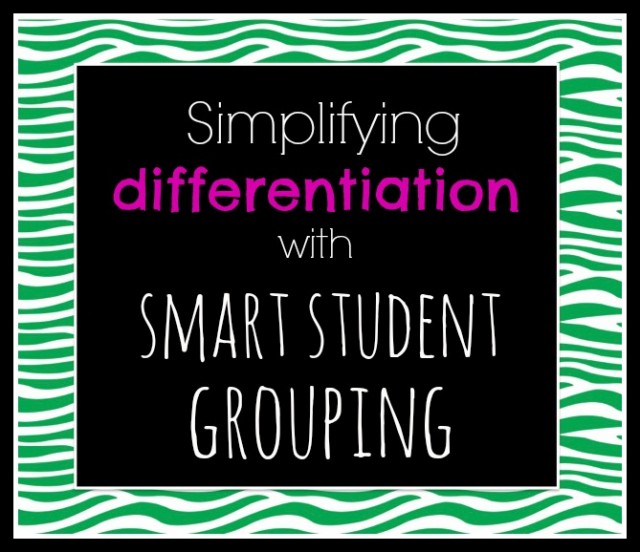Do your students hate group work? If so, they’re not alone. Personality conflicts and a wide range of abilities within the group often create results like this:

Here’s a strategy to make it easier for you to form effective groups for a project or activity and differentiate the work that students do within their groups:
- Pre-assess students in the target skill and rank students from highest-achieving to lowest. This is a private list that only you will see. If you have recent benchmark test results or other data, you may be able to use that to avoid over-testing, and the results may already be sorted for you.
- Form one group with the lowest achieving 4-5 students. You’ll be working with this group yourself to provide re-teaching and remediation as well as interventions.
- Form one group with the highest achieving 4-5 students. You can modify the project directions to make them more challenging and/or student-directed.
- Form the remainder of the groups from the rest of the list with a mix of stronger/weaker students, working from the top and bottom toward the middle. For example, students #6,7,19, and 20 could form one group, and #8,9,17, and 18 could form another group. That way some of your higher achieving kids are working with some of your lower achieving kids, but the students on both extremes have already been placed in other groups so everyone has a group s/he can truly contribute to. I like to switch up the exact placement a bit to accommodate students’ personalities and make sure the kids in each group can work well together.
- Assign roles/jobs to each student in the group according to their strengths, or let kids choose their roles. This way the work is divided up fairly and each student understands the aspect that she or he is responsible for doing.

Of course, there are lots of other considerations for giving collaborative or group work projects to students: Does the assignment lend itself to group work? Are the roles, outcomes, and objectives clear to each group member? Have students practiced working together, sharing responsibility, and solving disputes? Get more ideas on my Cooperative Learning page: you’ll find tips on when to use cooperative learning activities, how to choose between partner work and group work, additional ideas for determining group placement, and lots of tips for managing student learning during group work.

For more bright ideas from over 100 different bloggers, please browse through the link-up below and choose a topic that interests you. What makes this link-up unique is that none of these posts have products or printables of any kind, just practical classroom solutions. The grade levels for each are listed in the post titles. Enjoy!

Angela Watson
Founder and Writer
OR

Join our
community
of educators
If you are a teacher who is interested in contributing to the Truth for Teachers website, please click here for more information.















